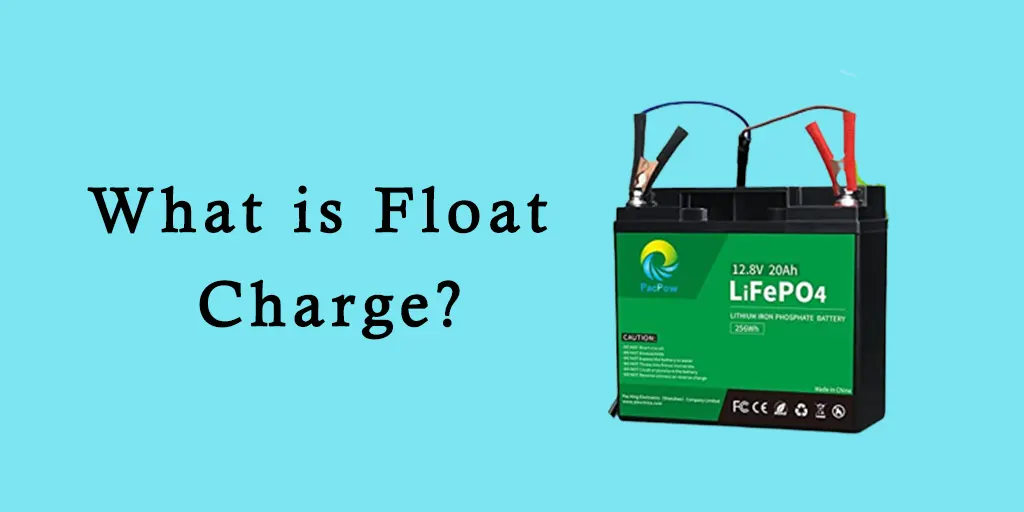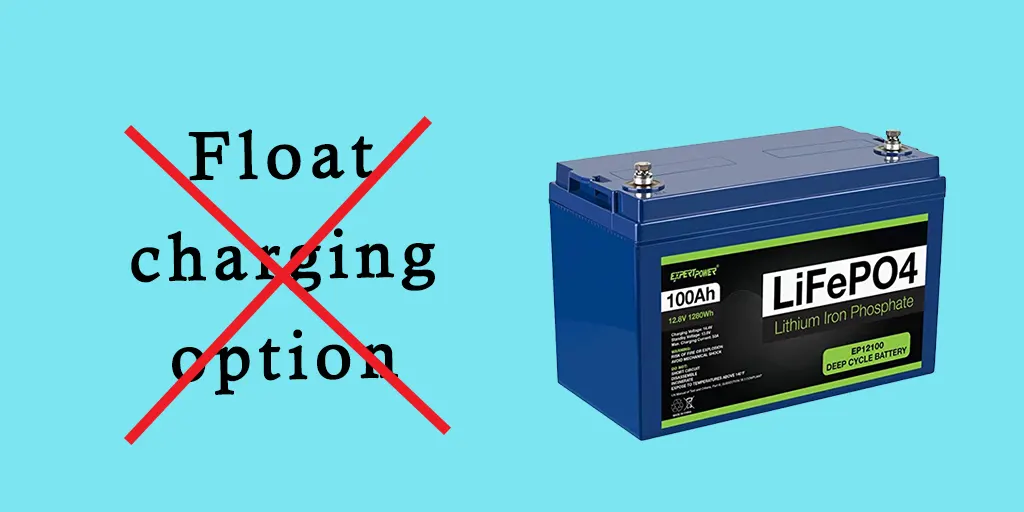People have many queries and misconceptions about charging their LiFePO4 battery. One of them is whether they need a float charge for their batteries.
Float charge is a stage of charging a lead acid battery. But do you need it for your LiFePO4 battery? Let’s find it out.
LiFePO4 batteries do not need a float charge. Its discharge rate is pretty low, about 2% per month. So, you won’t need float charging to keep a high state of charge of your battery.
What Is Float Charge?

By definition, float charge is maintaining a balance of a battery’s self-discharge rate in a charged condition by providing a continuous and constant voltage for the long term.
Let me make it easier for you. Float charge is the third stage of charging a battery that balances the discharge rate of a battery and does not allow it to discharge at a rapid speed.
Float charge is necessary for batteries like sealed lead acid or SLA. Lead acid batteries have three stages for charging. When the second stage completes- the battery becomes fully charged, and the battery goes into the float charging.
Figure 1: Lead Acid Battery Charging Stages
Lead acid batteries lose charge pretty quickly after removing the charger. So, rather than turning off, the battery charger enters into float charge mode, dropping down to a lower voltage and sticking to it.
The whole point of this charging stage is to keep the battery topped off and balance the discharge rate since a lead acid battery drains pretty quickly, even if there’s no load.
What Is Float Charge for LiFePO4 Battery?
LiFePO4 battery does not require a float charge. It completes the charging process in two stages. The first stage is called bulk charge, where charging is done at 30% to 100% current of your battery’s capacity rating.
It is also called a constant current stage. For a LiFePO4 battery, the charger takes about 1 hour to complete the stage [depending on the battery capacity]. Then the battery enters stage 2 of charging. In this stage, the battery becomes 100% state of charge.
Figure 2: LiFePO4 Battery Charging Stages
Stage two, also known as the constant voltage stage, will take as little as 15 minutes to complete [depending on the battery capacity].
LiFePO4 battery does not have a fast discharge rate like sealed lead acid batteries. It only discharges itself at a 2% monthly rate if no load is attached. That’s because the battery chemistry makes this battery internally balanced.
The following table shows the state of charge of the LiFePO4 battery over the months.
| Months | State Of Charge |
| Right After Fully Charge | 100% |
| After First Month | 98% |
| After Second Month | 96% |
| After Third Month | 94% |
| After Fourth Month | 92% |
| After Fifth Month | 90% |
As a result, it does not need a float charge to top it off and slow its discharge rate. The state of charge of a LiFePO4 battery will remain close to 100% even after a few months of not use.
Is Float Charging Good for LiFePO4 Battery?

LiFePO4 battery chargers do not have a float charging option. Even if you use a lead acid battery charger to charge your LiFePO4 battery, you must turn off the float charge option.
But if you cannot turn it off, to the very least, make sure the charger voltage does not go beyond 14.6V for a 12V battery.
Now, if you decide to use float charging anyway, your LiFePO4 battery might have some consequences. There is only one way of using a float charge with a LiFePO4 battery. That is when there are some loads attached to your battery.
For a 12V battery, you have to set the float charge at 13.30V, and the charger will carry the load instead of charging the battery. However, it can cause the voltage to drop and slightly increase the self-discharge rate.
According to a study, “with the increase in temperature, float charge increases the self-discharge rate and decreases battery capacity in the long run. The battery capacity drops down to 60% within a few months.”
So, float charging is not good for the LiFePO4 batter whatsoever. So, in any case, you must ensure that your LiFePO4 battery charging is completed within 2 stages and does not take any floating charge.
Final Thoughts
Float charging is not ideal for LiFePO4 batteries. It reduces battery capacity and boosts aging. That’s why manufacturers removed float charges from LiFePO4 battery charging. So, it will be wise for you to skip it as well.
References
1. T. Masaya., S. Takahisa. (2010). Float Charging Performance of Lithium Ion Batteries with LiFePO4 Cathode.

Eng. Matthew Joseph Nandirio is the Founder of walkingsolar.
After graduating from the University of Houston in 2002, matt started working as a Solar Electrical Engineer for several multi-national solar energy companies.
He has a wide range of experiences including solar system requirement analysis, planning, maintaining, debugging and even solar device development through research.
He now shares his 20 years of expertise through his articles on the walkingsolar website.
Further, he is also the author of two books on Solar Technology, “Solar Power for Villages” and “DIY Solar System for Dummies”.
